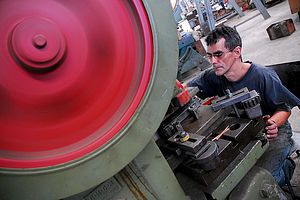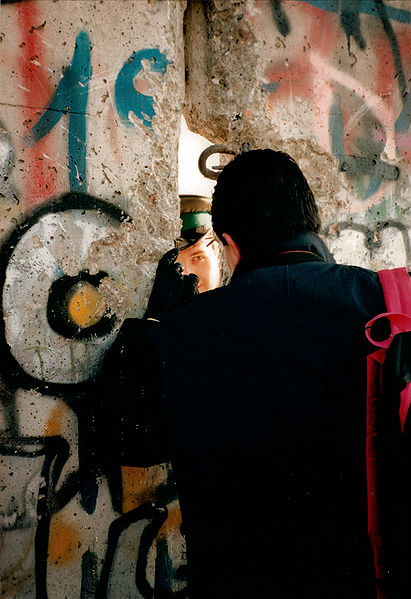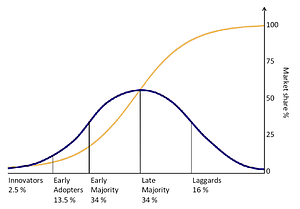11b.
Social change and transitions of societies
Sustainable development requires social change, even a transition to a new society, a grand vision. What do we know about social change? How does it occur, which are the processes, which contribute to or hinder social change? This is the topic of this sub session.
 It is clear that large social transformations occur repeatedly in history. We have the large civilization changes – from an agricultural society to an industrial society and then to a service oriented society. These transitions occurred as different sectors, which provided resources to society, changed fundamentally. In the agricultural society, some 85% were working in “food-producing” agricultural (primary) sector and lived on the countryside. In the industrial society, some 70% were working in “products-producing” manufacturing (secondary) sector and living in cities. This figure has in the service society decreased to 11-12%, while 70% work in the “service-providing” (tertiary) sector, and urbanization increased to some 85% or more. This development has been caused by technological and organizational developments, such as large-scale production, new machinery, and automation, but equally important is access to new resources, not the least fossil energy. The transitions are also characterized by a steadily increased use of resources.
It is clear that large social transformations occur repeatedly in history. We have the large civilization changes – from an agricultural society to an industrial society and then to a service oriented society. These transitions occurred as different sectors, which provided resources to society, changed fundamentally. In the agricultural society, some 85% were working in “food-producing” agricultural (primary) sector and lived on the countryside. In the industrial society, some 70% were working in “products-producing” manufacturing (secondary) sector and living in cities. This figure has in the service society decreased to 11-12%, while 70% work in the “service-providing” (tertiary) sector, and urbanization increased to some 85% or more. This development has been caused by technological and organizational developments, such as large-scale production, new machinery, and automation, but equally important is access to new resources, not the least fossil energy. The transitions are also characterized by a steadily increased use of resources.
But social change also refers, equally important, to a change in the social order or organization of society. Changes of social order include the transition from authoritarian to democratic government, from feudalism to capitalism and market economy, and the development of the welfare state; the rise of the civil rights movement and the acceptance of human rights; the development of the environmental protection movements; and not the least globalization, and large-scale use of information technologies. All these changes may be included in modernization, the processes that take a society from traditional to a modern. Modernization eventually seems to replace the key position of the family in society with the individual, and reduces the role of the church and see a growth of a more secular culture.

Finally, social change may also refer to political changes. These include de-colonisation, increased global cooperation and trade, less concern with military power, to economic growth as a primary political goal. A dramatic, unexpected and rapid political change was the end of the Cold War, when Central and Eastern European states changed political system as they left the communist block to become “states in transition” towards democracy and market economy. First a majority of inhabitants were all positive to the changes, but very soon sentiments changed and many missed the old system. It has taken close to a generation to adapt to the new social order, an adaptation still going on.
This social change may be a case of future shock, a change dangerous to a society and to sensitive individuals. The concept was introduced by Alvin Toffler in 1970 for a situation when persons perceive “too much change in too short a period of time”. He believed that the accelerated rate of technological and social change and information overload could leave people disconnected and suffering from “shattering stress and disorientation”. A similar concept is culture shock. It is the alienation and anger, which may occur when a person is transferred to a new culture. Culture shock is most often used in connection with migration.
The question of how social change is brought about has since eternity occupied thinking, as it has been on the agenda in all societies. Is it a sudden change, a revolution, or a slow change, an evolution? Is it by struggle and fight, or is it by political activism and persuasion? There are many examples of how one process transformed into the other. In an authoritarian regime, civil society has more difficulties to influence these changes; in a democratic society, the decision to change should hopefully be the result of a democratic process.
In a bottom up process, recruitment of members of society to the new cause is the key step to take. How many are needed to achieve a change? One study proposes that when just 5% of a society accepts a new idea, it becomes “embedded”, and when 20% adopt the idea; it is “unstoppable.” The study also shows that it normally requires 50% of the population to be “aware” of the idea in order to reach the 5% who will adopt it. Certainly, these figures are different for different ideas and societies, but they give us an idea of how social change may work. In a more authoritarian system, distribution of power is the crucial factor deciding on who could initiate and implement change.
 Diffusion of innovations was more rigorously studied by Everett Rogers, a professor of sociology. In 1962, he published his well-known theory of how innovations are adopted in society, among individuals and organization. Individuals progress through five stages: knowledge, persuasion, decision, implementation, and confirmation. The main elements that influence the spread of a new idea are the innovation itself, communication channels, time, and the social system. It progresses through several actors known as innovators, early adopters, early majority, late majority, and laggards.
Diffusion of innovations was more rigorously studied by Everett Rogers, a professor of sociology. In 1962, he published his well-known theory of how innovations are adopted in society, among individuals and organization. Individuals progress through five stages: knowledge, persuasion, decision, implementation, and confirmation. The main elements that influence the spread of a new idea are the innovation itself, communication channels, time, and the social system. It progresses through several actors known as innovators, early adopters, early majority, late majority, and laggards.
Which are the actors in social change processes? Social movements play a vital role as discontent members of society push for a change. There are also resistance to change, especially when those with vested interest understand that they will suffer in case the proposed change is brought about. We see this clearly in the climate change discussion, as typically those who will lose when the old system based on fossil fuels is replaced will protest or typically deny that there is a problem with global warming.
The transition to a sustainable society at present seems to be far away in time. Instead of adapting to the existing limits to growth and resource flows which the environment can cope with, policies in the world are promoting economic growth, as an overarching goal. John McNeill suggests (See Chapter 1a) that it would be more reasonable to focus on energy and demography than growth. The economist Nicholas Stern (See Chapter 2b) concluded that it is far better to invest about 1% of GDP in mitigation of climate change now, instead of suffering much worse costs in 20 or so years. But the world is postponing changes. They are perceived as costly and less pleasant, even if some may accept them as unavoidable in the longer terms. In this way, the transition to a more sustainable society is similar to the economic crisis. Loans are taken to keep lifestyle unchanged. In the meantime, consequences become more serious, as the change is postponed.
Materials for session 11b
Basic level
- Why does a society develop the way it does? By Gene Shackman, Ya-Lin Liu and George (Xun) Wang. A Review of Theory About Social, Political, Economic Change of The Global Social Change Research Project. Study the beginning of the website, The Global Social Change Research Project.
- Study The Process of Social Change by Len and Libby Traubman.
- Diffusion of Innovations by Everett Rogers and the idea of tipping points where a new idea catches fire. Does it exist? A review by Greg Orr, Stanford University
Medium level (widening)
- Study Achieving Culture Change: A Policy Framework (UK government report, 2008) 2. The concept of culture change, pp 23-38.
- Read A Three-fold Theory of Social Change and Implications for Practice, Planning, Monitoring and Evaluation by Doug Reeler, of the Community Development Resource Association, 2007
Advanced level (deepening)
- Why does a society develop the way it does? By Gene Shackman, Ya-Lin Liu and George (Xun) Wang. A Review of Theory About Social, Political, Economic Change of The Global Social Change Research Project.
- Study the role of NGOs in The rise and role of NGOs in sustainable development from International Institute for Sustainable Development, IISD
References
Knott, D., Muers, S. and S. Aldridge. 2008. Achieving Culture Change: A Policy Framework. A discussion paper by the Strategy Unit. Admiralty Arch, The Mall, London SW1A 2WH.
Reeler, D. 2007. A Three-fold Theory of Social Change and Implications for Practice, Planning, Monitoring and Evaluation. Community Development Resource Association.
BUP Sustainable Development Course
